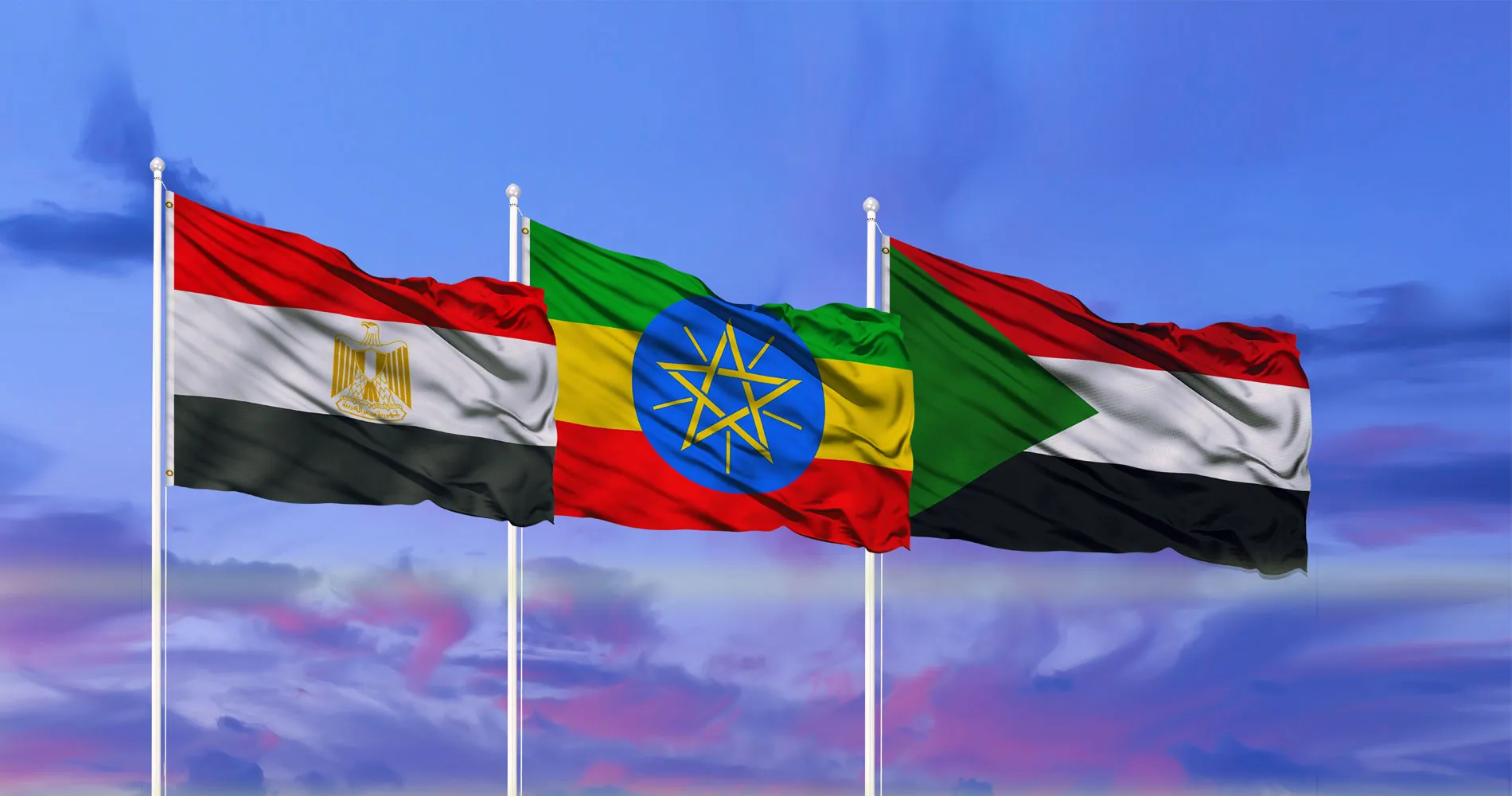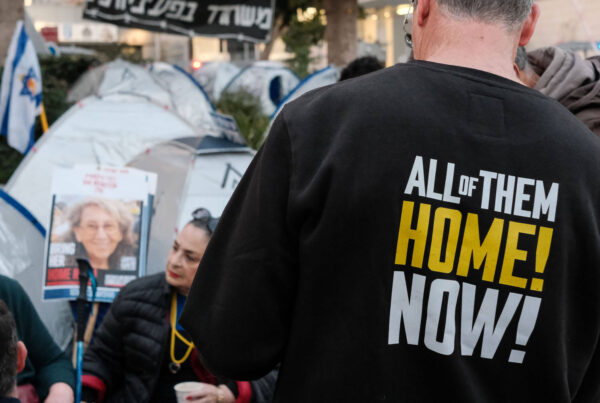Egypt and Sudan have long opposed the Nile Cooperation Framework Agreement. Regional tension has escalated as Egypt claims Ethiopia’s construction of a 4 billion USD dam on the Blue Nile threatens their water supply.
Michael Asiedu
20 January 2025
Arabic version | Chinese version | French version | German version
For many years the River Nile has been a source of contention among riparian countries (those which border the Nile). Several upstream countries such as Ethiopia, Uganda, Kenya, Tanzania, Burundi, Rwanda, and the Democratic Republic of Congo (DRC) have long argued that colonial-era agreements unfairly gave Egypt and Sudan, two downstream countries, greater rights over Nile access.
In 1929 the first Nile Treaty was signed by Egypt and the United Kingdom on behalf of Sudan, their colony at the time. This treaty bound upstream riparian countries to recognise the historical and natural rights of Egypt and Sudan to use the Nile waters. Upon Sudan’s independence in 1956, Egypt and Sudan renegotiated division of the Nile waters, resulting in the 1959 Treaty, allocating 75 percent of Nile waters to Egypt and the rest to Sudan.
This treaty is still in force today, but disputes over access to the Nile’s waters led to the creation of the Nile Basin Initiative in 1999. The intention was to bring together all riparian countries, with Eritrea as an observer, to develop a framework for equitably sharing the Nile waters in order to avoid conflict. On 14 May 2010, the Nile Basin Cooperative Framework Agreement (CFA) was opened for signatures, but Egypt and Sudan refused to sign, arguing that the CFA violated the 1929 and 1959 Nile River Agreements, as well as a 1989 International Court of Justice (ICJ) ruling that water agreements enjoy the same immutability as border agreements, i.e. they cannot be revoked or modified without the consent of all parties concerned.
However, following ratification by 6 of the 10 Nile riparian countries – Ethiopia, Rwanda, Tanzania, Uganda, Burundi and South Sudan – the CFA officially entered into force on 13 October 2024. The legal status of the CFA has also been confirmed by the African Union (AU). Egypt and Sudan continue to reject the agreement outright, and although DR Congo and Kenya, have not yet ratified the agreement, the ratification quota has been met.
On 12 October, in a joint statement expressing their displeasure, the Egyptian-Sudanese Permanent Joint Technical Commission on the Nile Waters (PJTC) called on all Nile Basin countries to “restore the integrity of the 1999 Nile Basin Initiative and to refrain from unilateral actions that could exacerbate the divisions between upstream and downstream countries”. Referring to the ratifying states, it added that the “Six-State Commission”, could in no way be considered representative of the Nile Basin as a whole.
Most critically, construction of the Grand Ethiopian Renaissance Dam (GERD), which began in 2011, has reinforced opposition from both Sudan, and especially Egypt who relies on the Nile for 98% of its water supply. Ethiopia constructed the $4 billion GERD on the Blue Nile, a major tributary of the Nile. Now almost 90 percent complete, Ethiopia sees the dam as vital to its economic development, planning to use it to generate much-needed electricity and insists it poses no threat to downstream water supplies. Downstream Egypt and Sudan see the GERD’s existence as a threat to their share of the Nile’s waters and are demanding a binding agreement to restrict the dam’s filling and operation.
Ethiopia has not yet offered such an agreement, and the dam is seen as a key factor in mobilising other upstream countries to ratify the CFA. Ethiopian Prime Minister Abiy Ahmed, called on non-signatories to join the effort on 13 October, describing the agreement as a “Nile family” that promotes regional cooperation for the equitable use of Nile resources. In a speech at the Cairo Water Week in mid-October, Egyptian President Abdel Fattah Al-Sisi emphasised water security as Egypt’s top priority and that his country could not afford to “lose a single drop of water”.
Rather than simply rejecting the CFA, Egypt and Sudan have offered alternatives, pointing to African transboundary water management models, such as the Zambezi and Senegal river basins, as examples of effective cooperation. However, regardless of the validity of such proposals, it may be difficult to get other upstream countries to agree to proposals coming from Egypt and Sudan. Upstream countries perceive both Egypt and Sudan as already having a greater degree of unfettered access to the Nile’s waters.
Broader geopolitical implications of the Nile dispute should not be overlooked. Egypt views Ethiopia as a regional geopolitical rival and has already sought military cooperation with Somalia to counter its influence in the Horn. Somalia had also welcomed Egypt’s offer to provide peacekeepers for the African Union Mission to Support Stabilisation in Somalia (AUSSOM to replace the outgoing African Union Transitional Mission in Somalia (ATMIS) in December 2024. A new UN resolution has set up a new African peacekeeping mission. This deal was brokered by Turkish President Recep Tayyip Erdoğan in late December 2024 and will permit Ethiopian troops to take part in the peacekeeping mission.
Yet relations between Somalia and Ethiopia are far from normalized. After the resolution passed Somali MP Ayub Ismail Yusuf called for the exclusion of Ethiopia from the peacekeeping force on X: “No nation can trust another where their sovereignty was threatened by them”.
Egypt’s increasing military involvement in Somalia, including arms supplies and peacekeepers, signals a counterbalance to Ethiopia’s regional influence, especially after Ethiopia signed an agreement to access Somaliland’s coastline for a naval base. Ethiopia has already expressed concern about Egypt’s role in Somalia, fearing that it could both destabilise the region and threaten its own strategic interests, including access to the Red Sea and the GERD.
Egypt’s and Sudan’s rejection of the new Nile framework and the former’s military manoeuvres in Somalia require immediate intervention by the African Union. If the AU does not use its peace and security architecture and engage key stakeholders in constructive dialogue, there is a strong possibility of regional hostilities.







